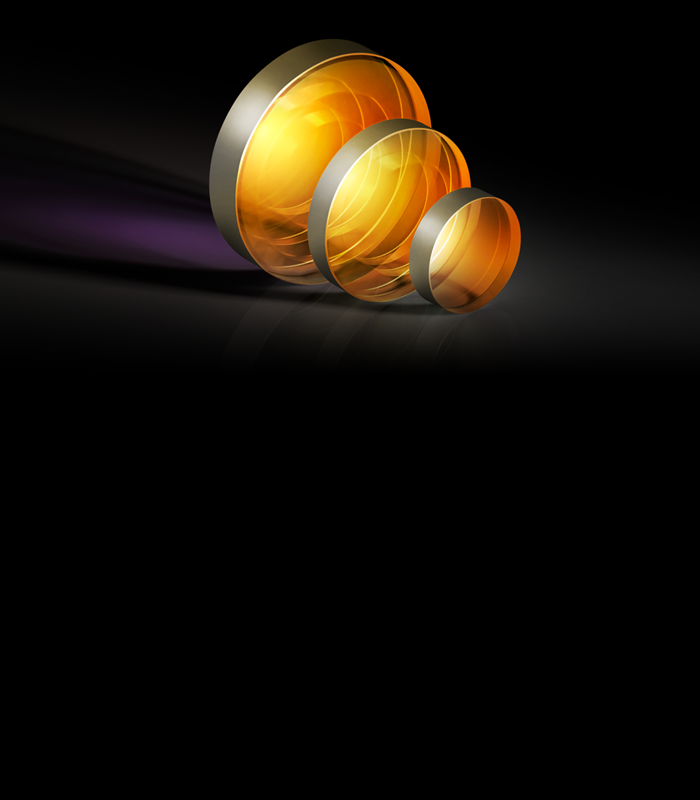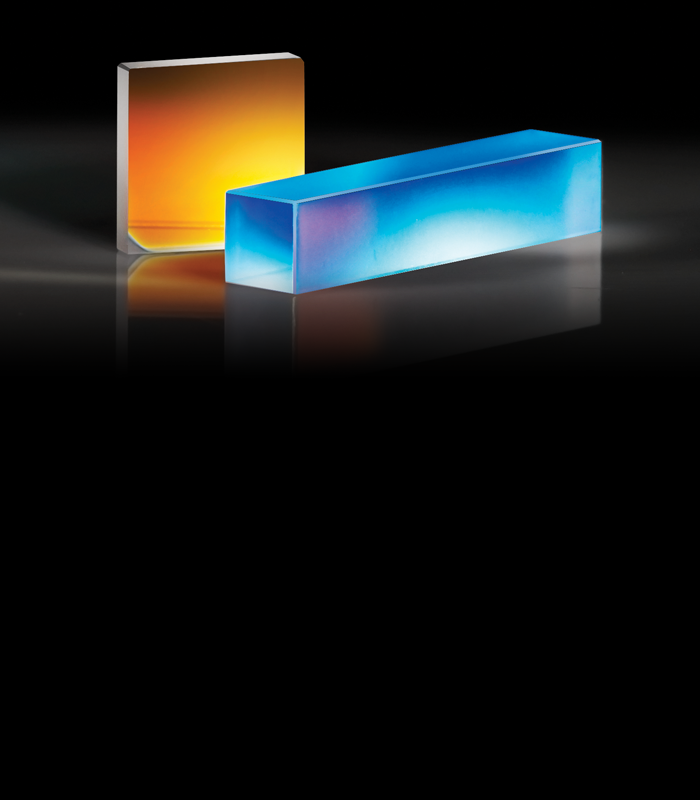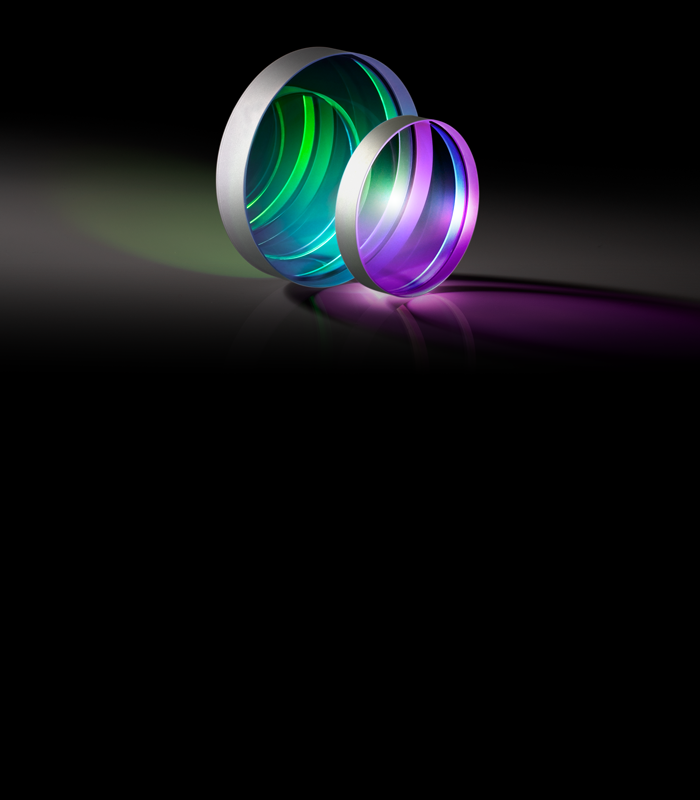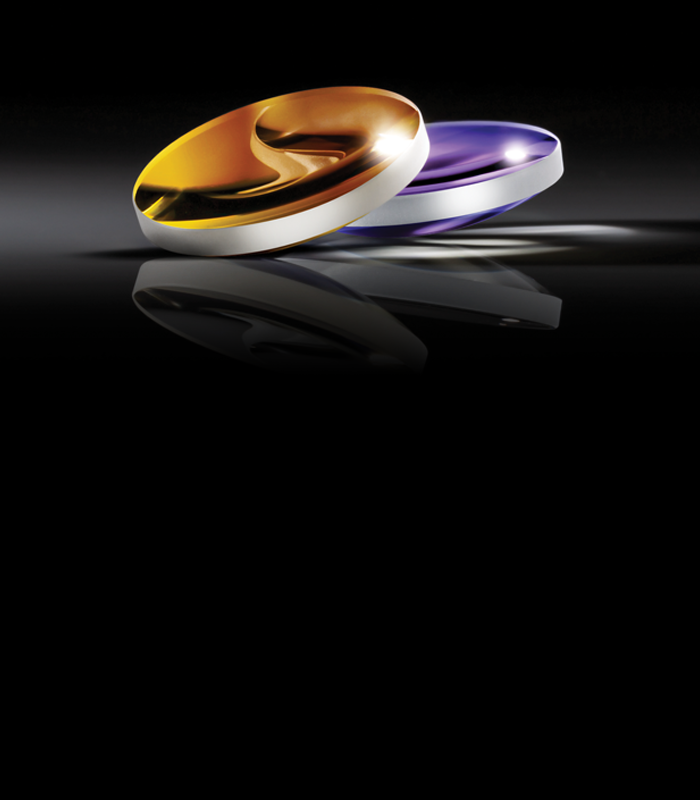
by Randall Hinton
The future of skin care depends on laser optics.
A tattoo is a permanent mark or design of pigment injected into the skin's dermis, the layer of dermal tissue beneath the epidermis. This dense layer of ink is more than what can be removed by the immune system, so it becomes entrenched below the dermis/epidermis boundary (Figure 1). To remove a tattoo, larger ink particles must be broken up into pieces small enough for the phagocyte/macrophage, a type of white blood cell, to engulf the ink particle, carry it through the tissue and remove it via the waste system. Pulsed laser light is one way to break up the ink particles (Figure 2).


Aesthetic laser systems vary by gain material, wavelength, pulse intensity, and pulse duration depending on the application and precision needed for a given treatment. Gain materials, pump sources, and mode-switching materials are often interchanged to achieve the desired output beam for a particular application.
| Laser Gain Medium | Wavelength (nm) |
|---|---|
| Dye | 540 / 570 - 640 |
| Copper | 510 / 578 |
| Gold Vapor | 627 |
| Krypton | 416 / 531 / 568 / 752 / 800 |
| KTP/Diode | 532 |
| Diode | 800 / 940 / 980 / 1450 |
| Nd:YAG | 1064 / 1320 / 1440 / 1550 |
| Nd:YVO4 | 1064 |
| Nd:YLF | 1047 / 1053 |
| Er:YAG | 1550 / 2940 |
| Er:Glass | 1540 |
| Thulium | 1927 |
| Er:YSGG | 2780 |
| Holmium | 2100 |
| CO2 | 10,600 |
| Ruby | 694 |
| Alexandrite | 755 |
Figure 2 shows an example of a laser system used in tattoo removal. In this setup, one solid-stateLasers that use a solid gain medium such as a glass or crystalline material doped with rare-earth elements to provide the energy states necessary for lasing. The pumping mechanism is the radiation from a powerful light source, such as a flash lamp. laser is used to pump another solid-state laser. The first laser shown has a gain material of Alexandrite crystal and is pumped by one or more flashlamps. The first laser cavity includes a highly reflective mirror and an output coupler mirror.2
The output coupler is a partially reflective mirror, that may be flat or curved, and allows part of the circulating intracavity power to be released from the first laser cavity. The second solid-state laser is a rare-earth neodymium-YAG (Nd:YAG) laser that is pumped by a portion of the initial 755nm output beam. The cavity of the Nd:YAG laser has a high reflecting pump mirror and a 1064nm output coupler mirror.
In some systems, the solid-state laser gain materials can be directly coated on both ends with coatings of appropriate transmission and reflection properties to form respective reflecting pump and output coupling mirrors.
In this example, the cavity of the Nd:YAG laser includes a q-switchingTechnique for obtaining energetic short (but not ultrashort) pulses from a laser by modulating the intracavity losses. Cr:YAG element. Other configurations may use a Pockels cellElectro-optical device constructed from a crystal with attached electrodes used to modulate a laser beam. A phase delay of a laser transmitting through the crystal is modulated by applying a variable electric voltage, which causes birefringence. The change is linearly proportional to the electric field, which is known as the Pockels effect. or Kerr cellElectro-optical device constructed from a crystal with attached electrodes used to modulate a laser beam. A phase delay of a laser transmitting through the crystal is modulated by applying a variable electric voltage, causing birefringence. The change is proportional to the square of the field, which is known as the Kerr effect. to control the pulse duration.3 A frequency doublingAlso known as second-harmonic generation, an input (pump) light wave can generate another wave with twice the original’s optical frequency in certain nonlinear materials. crystal KTP is positioned in the path to absorb the second output beam for generating a third output beam at 532nm.2
The use of Alexandrite and Nd:YAG as q-switched solid-state lasers in the configuration illustrated in Figure 2 allows for them to be used together in a single system. As an example, due to the different optical absorption of the various colors of tattoo pigment, an Alexandrite laser can remove blue, purple, and green tattoos, while an Nd:YAG laser can remove black tattoos. The second harmonic of a Nd:YAG laser, 532nm, can remove red, orange, and yellow tattoos.4 However, because the wavelengths of Alexandrite and Nd:YAG lasers have different optical absorption in melanin, an Alexandrite laser, at about 755nm, can be better for treating light-skin patients while a Nd:YAG laser, at about 1064nm, may be better for dark-skin patients.
Figure 3 represents a typical dermatology unit with a primary laser, or pump laser, inside the main unit. The laser light can be delivered directly with an articulated mirror arm or an optical fiber.5 There is a handpiece at the end which shapes and directs the output beam to the patient’s skin. Some handpieces contain another laser gain material, which is pumped by the primary unit.

Coupling the output laser beam of the primary laser into the gain material of a second laser can be accomplished in a variety of ways. Figure 2 shows a direct approach, though, depending on pulse intensity, pulse duration, and wavelength, an optical fiber may be used to transmit the beam to a hand-held device.
Figure 4 shows a schematic drawing of a handpiece including a solid-state laser pumped via an optical fiber by another solid-state laser. The beam exiting the optical fiber is collimated by several lenses before being directed into the gain material. The output beam of the handpiece can further be optically modified by a beam shaper before it is used to treat the skin of a patient.2

Some skin care treatments require an ablative laser method. Ablative lasers vaporize tissue and therefore are more aggressive than the gentler non-ablative lasers that leave the skin intact.6 The handpiece used may include a cooling system to minimize thermal injury to tissue surrounding the target region (Figure 5). Cooling can include contact conduction cooling, evaporative spray cooling, convective air flow cooling, or a combination thereof. Figure 5 is a cross-sectional view of a handpiece tip with an air flow cooling mechanism and glass window in contact with the patient’s skin.7

Plastic surgeons, dermatologists, and their patients continually search for new and improved methods for treating the effects of aging skin. One such method is to use a non-uniform, or fractionated, beam shape. Non-fractionated lasers act on the entire projected surface area of the skin, whereas fractionated lasers target multiple, equally distributed portions of the projected area.
This is accomplished by coupling the output beam from the laser source with an optical system that modifies the beam to provide a large-diameter beam with a non-uniform energy profile. The beam is comprised of several high-intensity zones surrounded by lower-intensity zones within the treatment beam. Different configurations of a fiber bundle, diffractive or refractive lens array, and axicon lenses may be leveraged to provide non-uniform energy output beams. One such configuration is shown in the handpiece tip show in Figure 5, while Figure 6 demonstrates how a diffractive element and lens could be combined to create an array of focal points.

An example of an application for non-ablative fractionated lasers is skin rejuvenation. The higher-intensity zones heat select portions of the target tissue to temperatures sufficient for a first treatment (e.g. collagen shrinkage), while the lower-intensity zones provide sufficient energy to the surrounding tissue for a second treatment. This stimulates the collagen to regenerate and "fill in" valleys for skin that looks younger and clearer (Figure 7). A large area of tissue, typically 7-10mm in diameter, can be treated simultaneously, while minimizing the risk of burning or other damage to the skin.7


HOLO/OR Diffractive Beamsplitters are used in materials processing applications, including parallel material processing and laser scribing, to increase laser system throughput, as well as in aesthetic treatments such as fractional treatment.




or view regional numbers
QUOTE TOOL
enter stock numbers to begin
Copyright 2023, Edmund Optics India Private Limited, #267, Greystone Building, Second Floor, 6th Cross Rd, Binnamangala, Stage 1, Indiranagar, Bengaluru, Karnataka, India 560038
California Consumer Privacy Acts (CCPA): Do Not Sell or Share My Personal Information
California Transparency in Supply Chains Act
The FUTURE Depends On Optics®